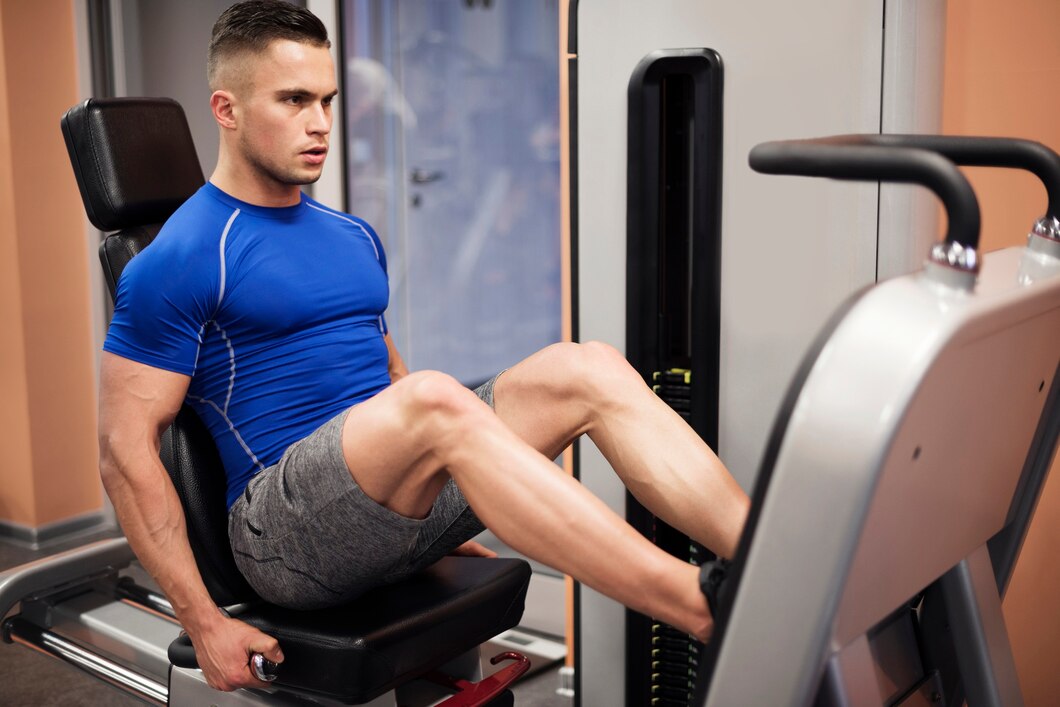
Calves, often the source of frustration for many bodybuilders, can be quite challenging to develop. They seem resistant to growth, defying your best efforts in the gym. No matter how many calf exercises you've attempted, from standing and seated calf raises to box jumps and leg press calf raises, your calves might appear stagnant or even diminish in size. You might have gone to lengths such as wearing long pants or high socks to conceal what you might consider your "chicken legs."
But do not lose hope, as there's a solution for your calf struggles. In this article, we'll explore advanced, cutting-edge training techniques that can shock your calves into growth. These methods demand dedication and determination, both physically and mentally, but the results are worth the effort.
Here are some of the most effective advanced training techniques for calves:
- Blood Flow Restriction (BFR) Training
BFR training involves using a band or cuff wrapped around your lower leg, just below the knee, to restrict blood flow to the calves. This creates a hypoxic environment that stimulates muscle growth and strength by increasing metabolic stress and activating more muscle fibers.
To perform BFR training, ensure the band or cuff is snug enough to reduce blood flow by around 50%, without completely cutting it off. You should feel a slight tingling or numbness in your calves, not pain or discomfort.
Perform high-rep sets (15-30 reps) of calf exercises using light weights (20-30% of your 1RM) with short rest periods (30 seconds or less). Exercises like standing or seated calf raises, donkey calf raises, or machine calf raises work well.
Aim for 3-4 sets per exercise and 1-2 exercises per session, limiting BFR training to once or twice a week due to its taxing nature on muscles and the nervous system.
- Drop Sets
Drop sets involve performing a set of calf exercises with heavy weights until failure, then immediately reducing the weight by 20-30% and performing another set until failure. Repeat this process until you reach the lightest weight possible.
This method induces significant muscle damage and fatigue, triggering muscle growth and strength by increasing protein synthesis and hormonal response.
To execute drop sets, prepare several weights in advance or use equipment that allows quick resistance changes. Exercises like standing or seated calf raises, donkey calf raises, or machine calf raises are suitable.
Incorporate 1-2 drop sets per exercise and 1-2 exercises per session, limiting drop sets to once or twice a week due to their demanding nature on muscles and recovery.
- Plyometrics
Plyometrics involve explosive jumps that engage your calves, such as box jumps, depth jumps, bounding, skipping, or hopping. These exercises improve power and speed by enhancing fast-twitch muscle fibers and neural activation.
To incorporate plyometrics effectively, you'll need a box, bench, or step that challenges you but avoids injury risk. Ensure you have ample space for safe jumping and soft landings.
Perform plyometric exercises like box jumps, depth jumps, bounding, skipping, or hopping in 3-5 sets of 5-10 reps per exercise, and include 1-2 exercises per session. Due to their impact on joints and tendons, limit plyometrics to once or twice a week.
These advanced training techniques for calves offer a pathway to overcome plateaus and achieve substantial growth and development. While they aren't overnight solutions, they complement your hard work, proper nutrition, adequate rest, and patience.
Keep in mind that calf development is influenced by genetics, and individuals have varying potentials. However, with dedication to these techniques, you can maximize your genetic potential and capitalize on your efforts.
Take the challenge and implement these advanced training methods. Be prepared for the discomfort and soreness in your calves, but relish the satisfaction of witnessing their gradual growth and increased strength. Show off your well-earned results with pride and confidence.



Leave a Comment